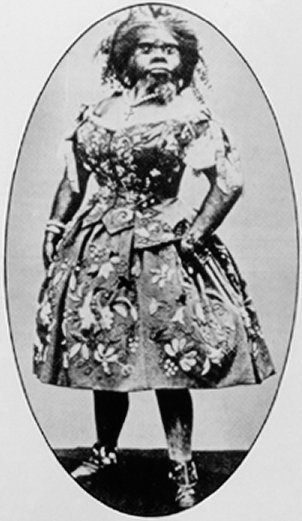Congenital generalized hypertrichosis (CGH) represents a group of conditions characterized by excessive hair growth over the entire body, well beyond the average limits for a particular age, sex or race. Congenital generalized hypertrichosis terminalis (CGHT) with gingival hypertrophy is a distinct subgroup of CGH that is associated with universal overgrowth of darkly pigmented hairs, enlarged gums and a distortion of facial features, the phenotype famously exhibited by Julia Pastrana.

Julia Pastrana
"Although it has long been believed that most people with CGH have some kind of genetic defect, the specific genetic mutations that underlie CGHT, with or without gingival hyperplasia, had not been discovered until now," explains senior study author Dr. Xue Zhang from the Chinese Academy of Medical Sciences and Peking Union Medical College in Beijing. The condition has been very difficult to study because it is so rare.
Dr. Zhang and colleagues performed a sophisticated, high resolution genetic analysis of several members of three Chinese families with CGHT and an individual with a sporadic case of CGHT with gingival hyperplasia. The researchers mapped the genetic locus for this syndrome and discovered that genetic defects on chromosome 17q24.2-q24.3 were responsible for CGHT with or without gingival hyperplasia.
The three families exhibited different DNA deletions whereas the sporadic case was associated with a DNA duplication within the identified chromosome region. These different copy number mutations affected 4 to 8 genes. "Our work clearly establishes CGHT as a genomic disorder. However, further studies are needed to elucidate the exact molecular mechanisms by which copy number mutations on 17q24.2-q24.3 lead to the defining characteristics of this rare disorder," concludes Dr. Zhang.





Comments